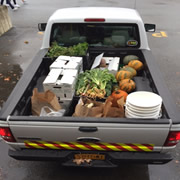
Senior Capstone Projects (2014-2015)
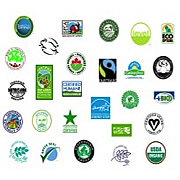 Easy Being Green? The Effects of Environmental Marketing on Millennials Consumer Behavior
Easy Being Green? The Effects of Environmental Marketing on Millennials Consumer Behavior
Elizabeth Dolan, Natalie McKeon, and Sarah Mellon (2015)
The Millennial Generation is very concerned about the environment, but this ecological sentiment may not translate directly to their purchasing behavior. Millennial consumers struggle in their ability to identify and interpret eco-labels. This population is more likely to support green products that are associated with a strong, eco-friendly brand, indicated by clear and visually-appealing imagery.
 Backyard Chickens: Hipster Fad or Gateway to Sustainable Living?
Backyard Chickens: Hipster Fad or Gateway to Sustainable Living?
Julietta Cole (2015)
This case study explores the relationship between backyard chickens in Saratoga County and environmental behavior in order to determine whether chickens are a fad or gateway to sustainable living. Interviews and surveys indicated that chicken owners are more likely to pay more for local, natural, and organic products, to grow their own food, to acquire more microlivestock, and to compost. The movement indicates a broader sustainable attitude.
James Brownie, Jared Herman, and Jessica Aleman (2015)
Food Forests are low-maintenance, multifunctional, edible landscapes based on the principles of permaculture that can meet the needs of both people and ecosystems sustainably. We assessed the feasibility of creating a Food Forest in the City of Saratoga Springs. We conclude that a Saratoga Springs Food Forest is desirable and feasible, and anticipate that our research and recommendations will guide future implementation.
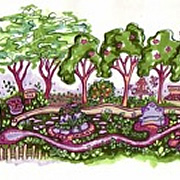 Bringing the Forest into the City: Creating a Community Food Forest for Saratoga Springs
Bringing the Forest into the City: Creating a Community Food Forest for Saratoga Springs
James Brownie, Jared Herman, and Jessica Aleman (2015)
Food Forests are low-maintenance, multifunctional, edible landscapes based on the
principles of permaculture that can meet the needs of both people and ecosystems sustainably.
We assessed the feasibility of creating a Food Forest in the City of Saratoga Springs.
We conclude that a Saratoga Springs Food Forest is desirable and feasible, and anticipate
that our research and recommendations will guide future implementation.
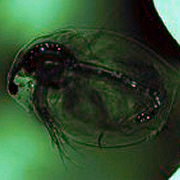 Distribution and consequences of microplastics, a new anthropogenically derived contaminant
in streams
Distribution and consequences of microplastics, a new anthropogenically derived contaminant
in streams
Margie Pfeffer and Jordan Stark (2015)
Microplastics are widespread in large water bodies including oceans, lakes and rivers. We sampled streams in small towns in Upstate New York to determine the breadth of microplastic pollution and the contributions of both point and nonpoint sources of microplastics. After demonstrating the presence of microplastics in these small systems, we exposed Daphnia magna (water flea) to microplastics to determine whether they could be incorporated into the food web or have negative health effects.
Report is not available. Please contact Karen Kellogg for more information.
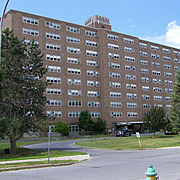 Barriers to Affordable Housing and Sustainable Solutions: A Case Study of Saratoga
Springs, New York
Barriers to Affordable Housing and Sustainable Solutions: A Case Study of Saratoga
Springs, New York
Lauren Bosche, Emily Durante, and Margaret Patterson (2015)
The purpose of this research is to contextualize Saratoga Springs as a case study
for finding sustainable solutions to housing problems commonly faced by cities that
undergo urban renewal. Using archival research, we investigated the specific challenges
that Saratoga Springs faces. Through interviews we gained an understanding of the
obstacles that affect access to and development of affordable housing programs in
the Saratoga Springs region.
 Overseeing Oversight: Citizen Advisory Groups and the Hudson River PCB Superfund Site
Overseeing Oversight: Citizen Advisory Groups and the Hudson River PCB Superfund Site
Nick Hartmann, Sarah Hoenig, and Nandini Srinivasan (2015)
We gathered data about the Community Advisory group (CAG), a unique form of oversight designed to ensure the removal of PCBs from the Hudson River. Our results indicate that compared to traditional oversight, CAG members have more dedication, technical capacity, ability to expand the cleanup project, and ability to share knowledge. However, there is lack of public involvement, a lack of member commitment, and stakeholder bias.
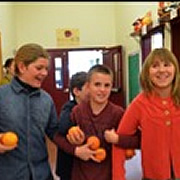 Cultivating Seeds of Change: Knowledge, Perception and Behavior Outcomes of an Experiential
Plant Literacy Curriculum
Cultivating Seeds of Change: Knowledge, Perception and Behavior Outcomes of an Experiential
Plant Literacy Curriculum
Lauren Mamuszka, Jenna Frank, and Eliza Hollister (2015)
We measured the environmental knowledge, perceptions, and behavioral outcomes of an experiential plant-literacy curriculum designed for 5th and 6th graders at an independent elementary school in Saratoga Springs, NY. This study reinforces existing literature and provides a better understanding of how experiential pedagogy and small-scale agricultural systems can be used as effective teaching tools. Treatment group students showed statistical improvement in environmental knowledge and behaviors at post-test.
![Evolv[ing] Saratoga Springs: Composting Food Waste in Restaurants](/environmental_studies/capstone/projects/images/EscobarKaslowskiProject-2015.jpg) Evolv[ing] Saratoga Springs: Composting Food Waste in Restaurants
Evolv[ing] Saratoga Springs: Composting Food Waste in Restaurants
Raquel Escobar and Melissa Kaslowski (2015)
We examined the successes and challenges for Evolv Composting LLC business of Saratoga
Springs, New York to raise awareness and encourage restaurants to compost their food
waste. Evolv is a newly established, local composting business developed by two Skidmore
students. We conducted surveys and interviews to better understand both the barriers
to restaurant participation in composting programs and the perceived benefits of the
program.
 Retrofitting Homes for Energy Efficiency for Low Income People: A Case Study of Saratoga
County
Retrofitting Homes for Energy Efficiency for Low Income People: A Case Study of Saratoga
County
Amy Weaver, Melissa Chilinski, and Spencer Nelson (2015)
We analyzed the effectiveness of low-income weatherization in Saratoga County, NY. Based on a comprehensive examination of literature on weatherization programs at a global and national level, funding appears to be the greatest barrier for low-income weatherization programs. We suggest allocating more funding to programs that focus on a streamlined approach to weatherizing mobile homes as a way to maximize funding and houses weatherized.
 Incentives and Barriers for Implementing Solar Energy Technology in Schools in Saratoga
Springs, NY
Incentives and Barriers for Implementing Solar Energy Technology in Schools in Saratoga
Springs, NY
Osheen Srinivas (2015)
In New York, there are many state tax incentives to use solar energy. This research
works to better understand the incentives, barriers, and power of decision-making
in the Saratoga Springs, NY school district. The Saratoga Springs School District
is not yet ready to implement solar technology due to barriers such as lack of comprehensible
information from the initiative to users, and the upfront costs of installation.
Report is not available. Please contact Karen Kellogg for more information.
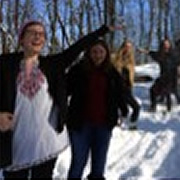 The Nature of Stress: Outcomes of Nature Walks in Skidmore’s North Woods in Relation
to Student Mental Health
The Nature of Stress: Outcomes of Nature Walks in Skidmore’s North Woods in Relation
to Student Mental Health
Jewels O’Brien, Oliver Moffat, and Laura Mindlin (2015)
Growing research supports the positive effects of interaction with the natural environment on stress, happiness, and other indicators of good mental health and cognitive functioning. We investigated the effects of three weekly nature walks on a group of college students. Our findings support the relationship between nature walks and mental health, and can inspire the modern movement towards nature-based healing, leadership, and college pre-orientation programming.
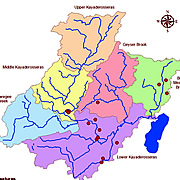 Urbanization in the Kayaderosseras Creek Watershed: Impacts on Stream Temperature
Urbanization in the Kayaderosseras Creek Watershed: Impacts on Stream Temperature
Jessica Dunning, Zachary Gordon, and Alice Wu (2015)
Kayaderosseras Creek is a trout stream in Saratoga County, but trout are cold-water fish and increased urbanization in the watershed may be increasing stream temperature. We ran a thermal urban runoff model on 15 sites throughout the watershed. Percent impervious cover at the sites had a large impact on both runoff and stream temperatures. Low-impact development and other techniques for reducing runoff are needed to maintain trout habitat in the watershed.
 Sinister Superbugs Skulking in Streams?
Sinister Superbugs Skulking in Streams?
Hannah Bachrach, Anna Gubbins, and Sarah Turner (2015)
Upstate New York has a history of industry dumping its heavy metal waste into streams.
Active heavy metal pollution can lead to antibiotic resistance in stream microbial
communities, but it is unknown if legacy heavy metal pollution can have the same effect.
We grew stream bacteria on four different treatments to determine the effects of these
legacy heavy metals and other urban pollutants on antibiotic resistance in stream
bacteria and identified microbial community shifts.
